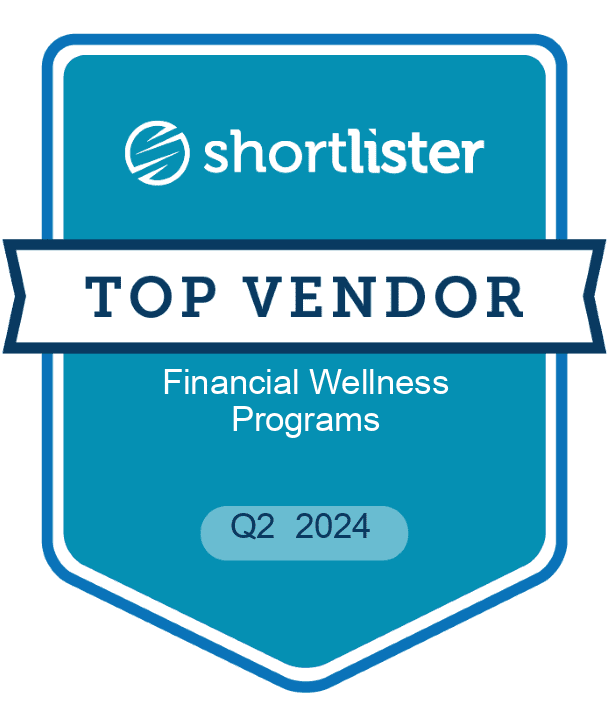Have Your Employees Completed Their Annual Financial Well-being Exam?
Employers: Just like your employees are encouraged to get a yearly physical assessment, they should also consider an exam for their finances. Here’s how you can help.

It’s been a difficult year for employees and households. Inflation has battered budgets, federal student loan payments have resumed, interest rates for mortgages and other forms of loans have skyrocketed, and credit card balances are growing at the fastest pace since 2019.¹ If you are an employer, your workforce is either already financially stressed or quickly moving in this direction!
To put employees’ struggles into perspective, here is our most recent data about where they stand financially:
- 63% do not maintain a balanced budget.²
- 11% have a credit score above 720.³
- 67% of employees do not have three months of emergency savings.⁴
- Over half haven’t calculated or determined how much they have to save for retirement.²
- 31% are unable to cover a $1,000 emergency.³
Employees need benefits and help with financial fundamentals, such as debt management, credit repair, and writing goals. Forward-thinking employers are providing and promoting financial well-being programs – and we are not just talking about retirement planning consultations! They should include coaching that covers various personal finance challenges.
Navigating the Financial Well-Being Exam Process for Employees
Typically, an employee can access financial well-being services through an Employee Assistance Program (EAP) or directly if their employer has contracted with a financial well-being program like My Secure Advantage (MSA). Just as an annual physical exam has a long list of questions and tests to assess your physical health, a wide range of questions should be asked to assess your financial health. The following questions are important for employees to answer at least annually. Still, it is also critical that an unbiased coach is involved to help them assess and prioritize their answers and develop a realistic action plan.
- Are you in control of your spending? Have you developed a budget that aligns with your goals? A positive check mark means maintaining a balanced budget with positive cash flow.
- Do you have a favorable credit score and manageable levels of debt? A positive check mark means:
- A credit score of 720 or higher
- No revolving credit card debt
- Less than a 35% debt-to-income ratio (better yet, no debt at all!)
- Should something happen to you, do you have measures to protect your assets and loved ones? A positive check mark means:
- Three or more months of emergency savings
- Insurance to protect yourself and your family
- Having an updated will and/or trust in place
- Use of credit monitoring services
- Do you have a strategic plan to achieve your retirement vision? A positive check mark means:
- A defined retirement plan exists and gets reviewed at least annually
- Annual savings targets of at least 15% of income
- Do you have formal goals or action plans for upcoming major purchases or life events? A positive check mark means:
- Researched and estimated costs associated with upcoming major expenses
- Established timeline and monthly savings targets to pay for future purchases
Consider Incentives for Employees to Meet With a Money Coach
A great way to get your employees to complete a financial well-being checkup and to further promote coaching services and financial well-being benefit offerings is to provide incentives. The incentives should be substantial enough to nudge and motivate employees to want to take that big first step toward change. Some examples include:
- Gift cards
- Paycheck bonuses
- Branded merch
- Tickets to events
The Bottom Line
Most of us have heard the phrase, “An ounce of prevention is worth a pound of cure.” With personal finances, not paying attention to growing debt or a lack of savings for major expenses can result in high financial and emotional stress. Employers must recognize that this risk is detrimental to the overall well-being of their workforces and how promoting financial well-being services can help.
To learn more about the MSA financial well-being solution and how to help employees improve their overall well-being, contact us today.
¹ “Household Debt and Credit Report (Q3 2023).” Federal Reserve Bank of New York. newyorkfed.org/microeconomics/hhdc. Accessed 4 Dec. 2023.
² My Secure Advantage, Inc. August 2023. Based on MSA member self-reported live event data. 1,856 responses.
³ My Secure Advantage, Inc. November 2023. Based on MSA Member self-reported data from Jan.-Dec. 2022.
⁴ MSA’s 2022 Pulse Survey (MSA: Dec. 2022). Based on member data collected from Nov.-Dec. 2022.
More Like This
Growing financial stress could cause irreparable damage to the overall well-being of employees. Dive deeper into some trending data concerning employees' mental and financial health and see how MSA is helping employees reduce their financial stress.
50% of employees with health insurance had higher healthcare expenses this past year, according to EBN magazine.1 What’s more is the higher costs are pushing employees to make poor financial decisions that not only prove harmful for their current situation but for their future as well. With employees’ financial and general well-being in question – […]
Discover how overall health and well-being are transformed when employees seek educational guidance through the employee financial well-being solution, My Secure Advantage®.
A financial wellness program differs in many ways from a typical retirement program, but it shares one key feature in common – it can prepare your employees for the future. According to a study published by Metlife in 2019, 52% of employees believe that employers have a responsibility for the financial well-being of employees, and […]

